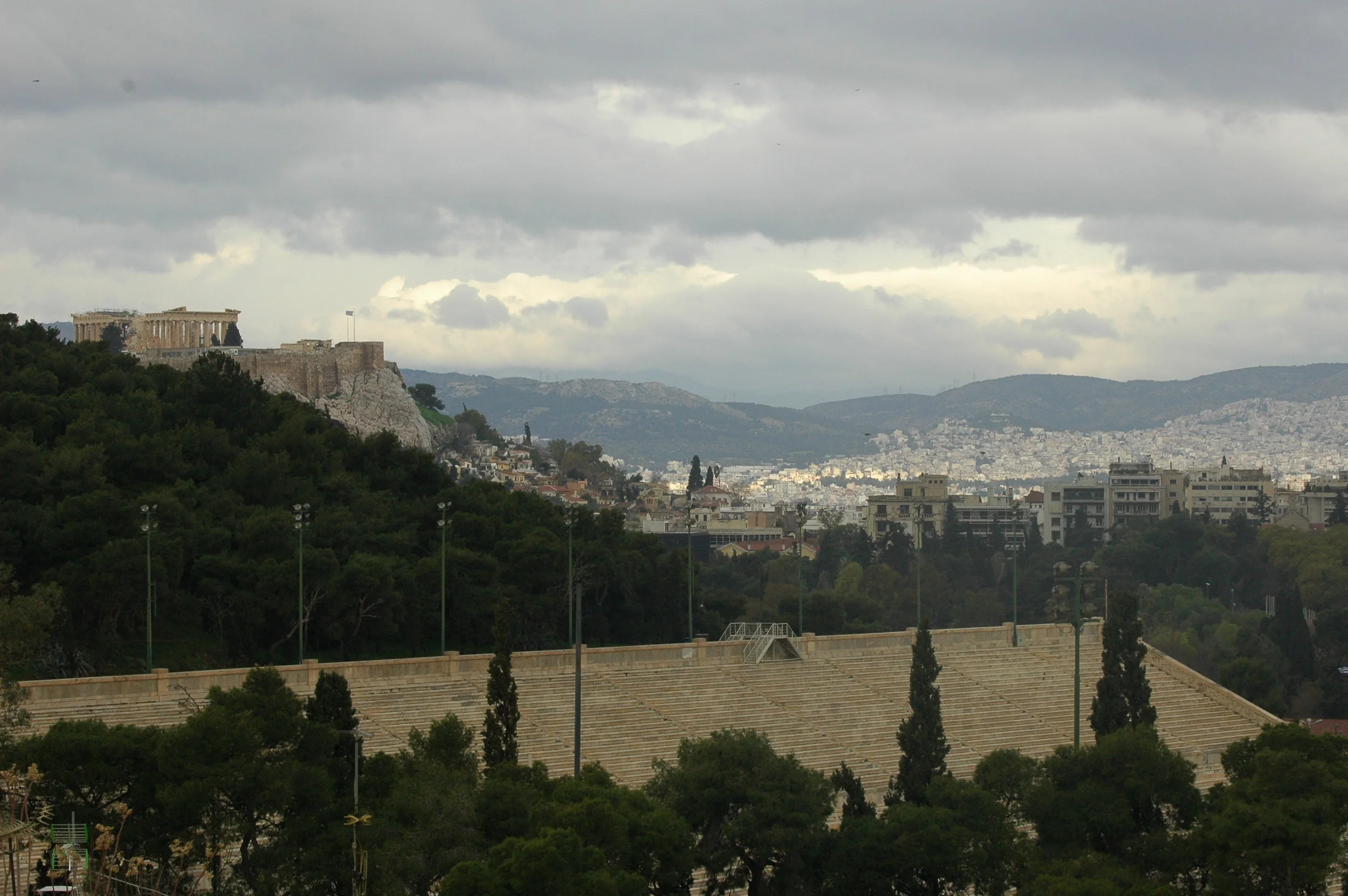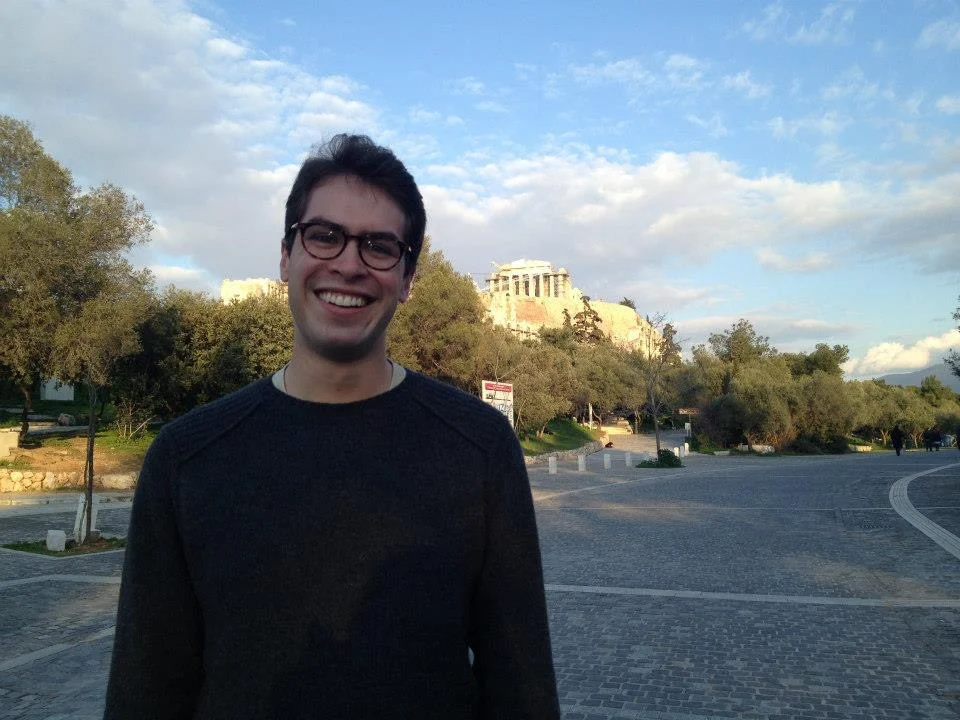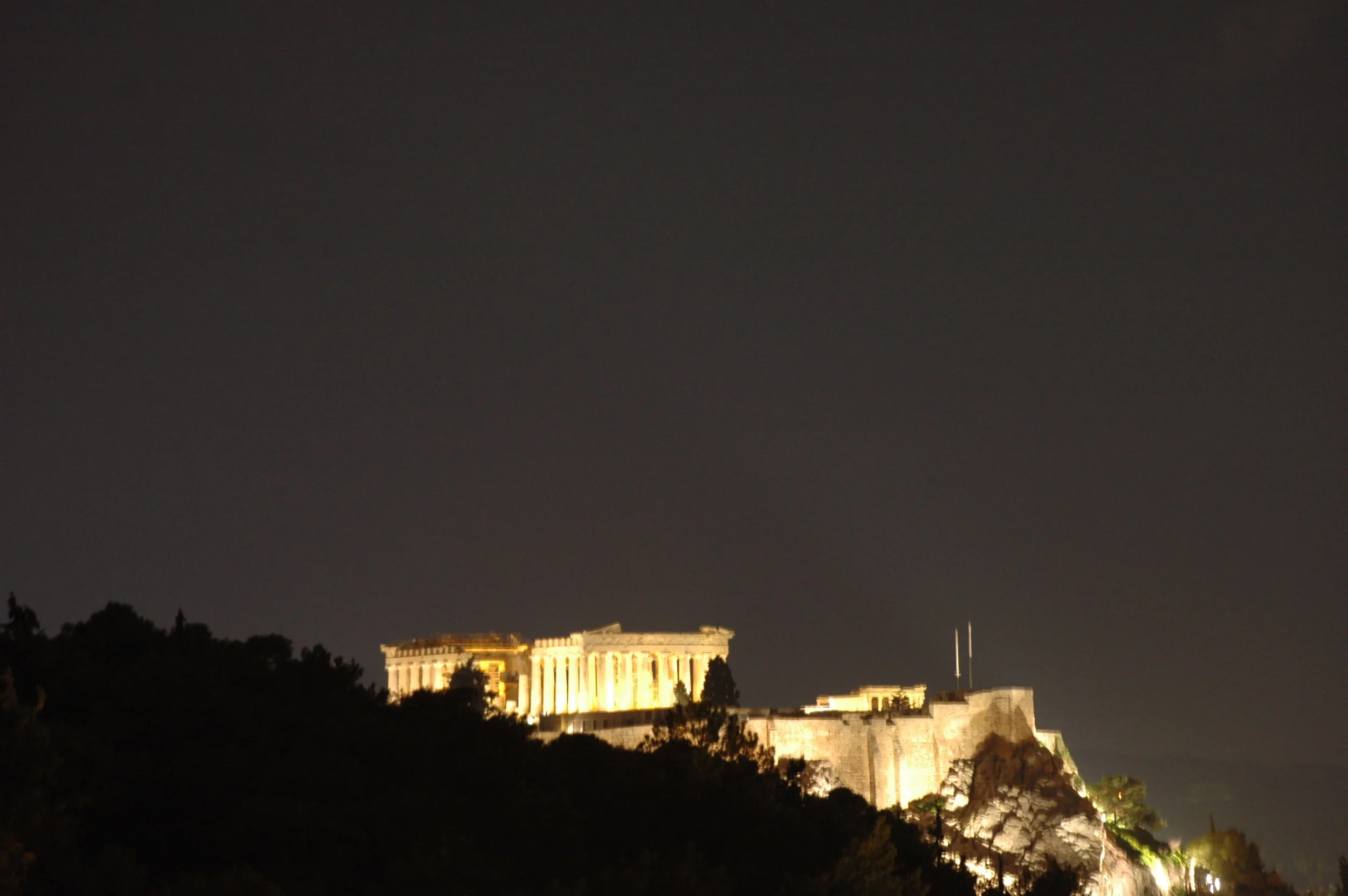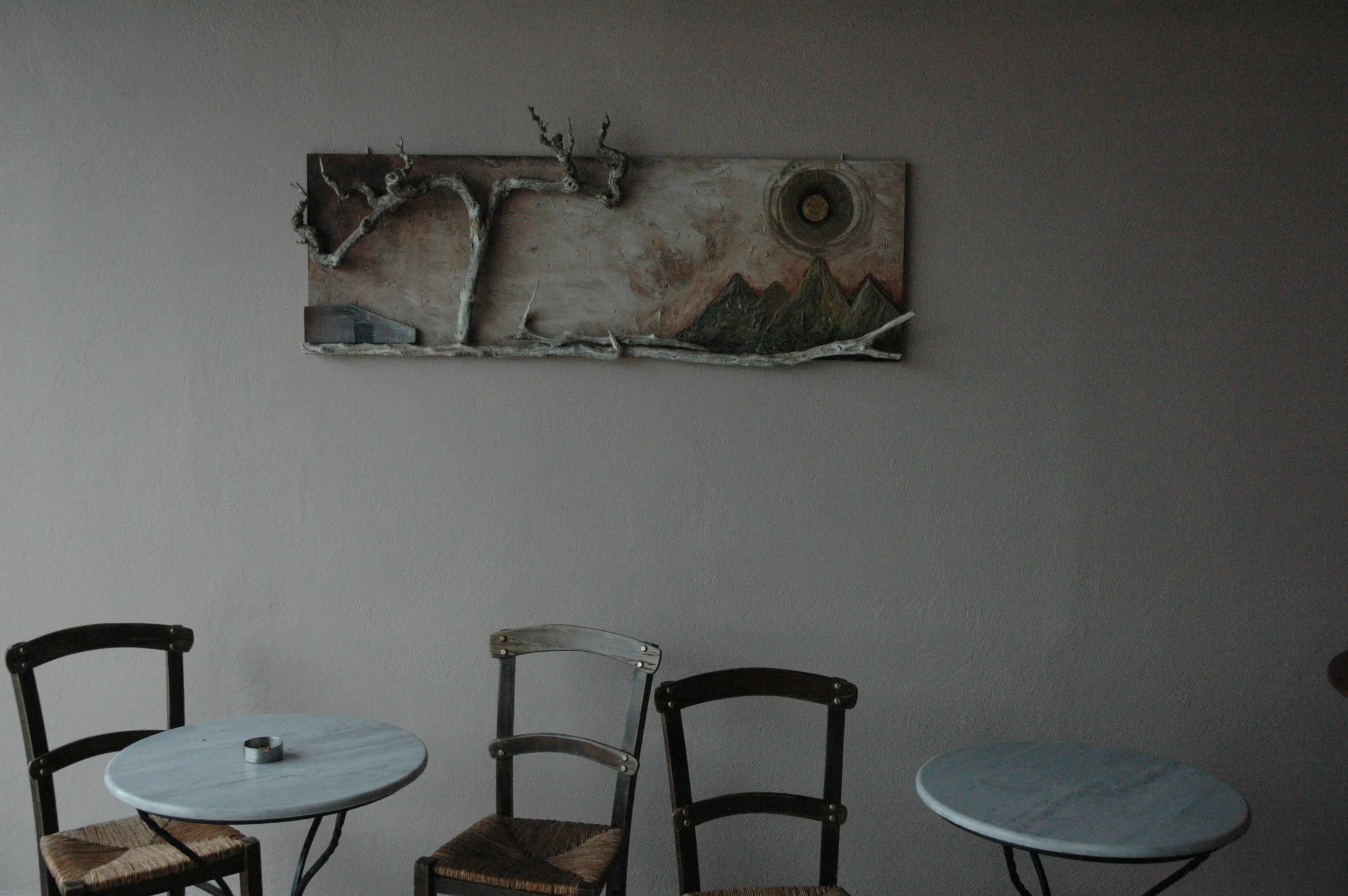Returning to Athens: Around the Acropolis
“The scope of the museum is nearly 3000 years of one hill.”
If Italy is shaped like a boot, the country of Greece, on a map, resembles the scatter plot of a broken hand.
My second day in Athens, I went to the Acropolis museum for nearly 3 hours. The scope of the museum is nearly 3000 years of one hill — one hill! — and the civilizations that passed through it from about 1200 BCE to 1500 CE. What started as just a wall that fortified the slope’s perimeter at the end of the bronze age, that it would persist through invasions, explosions, more war, comedies, tragedies, and trials — then religious conversions, imperial takeovers, independence, financial crisis — it astounds me that I could stand beneath it. The night after I went to the museum, back at my Airbnb, I turned on the news and heard the BBC report, Angela Merkel had proposed Greece sell the Parthenon to relieve its debt.
The mythology around the Acropolis is that there was a competition between Athena and Poseidon for who would control the region of Attica. The sea god offered a spring of salty water; Athena offered the olive tree and the goddess won. So the Athenians then honored Athena on the Acropolis. On the first floor they have about 6 miniature reproductions of the Acropolis over nearly 3000 years and the growth and changes it underwent. You see small white pillared monuments get built, destroyed, rebuilt, and finally around 1500 CE you see within the Parthenon — a structure erected for Athena, the goddess of the city — a small byzantine church to the Virgin Mary. I could have cried and it was only 15 minutes into the museum.
Visitors work their way up from the bottom. I really gravitated to three exhibits.
There was a temple for Athena that preceded the Parthenon. One of its pediments was reconstructed as best as could be managed with the remains. Much of the sedimentary statues have weathered with time and many of the precious metals and stones have been looted. The pediment recreated several Greek myths, one being Herakles as he fought the sea monster Triton. He was carved in limestone taken from Piraeus — just a couple miles to the west of the city center.
On the same floor there was hung up on display a relief of a κεραμερα — a ceramicist, or a potter. He’s shown in profile, smiling, holding two kylikes, or wine cups. He has both in one hand. The first he holds from the base, and the other just sort of hangs from the end of his pinky finger. The plaque indicated they would have been made by this potter. However if there’s anything I or my family know about potters and wine, we can’t rule out the possibility of double fisting.
The last was the Kritios boy. After the Persians invaded Athens, sculptors began to experiment with more natural poses. Imagine the novelty of seeing a statue where the person’s weight was shifted to one leg. As I read the plaque, I realized it was how I was standing. One leg back, the shoulders relaxed. I thought of the famous portrait of Walt Whitman as a young man in a black hat, workman’s shirt, the serious face — looking like the Kritios boy.
After the museum the weather turned colder. The wind picked up and I thought it might rain.
Teenage Roma girls hand out flowers. Younger girls have toy accordions.
A stone path curves gently up the slopes, and I walked up the hill which was now abandoned by most the tourists fleeing the weather. The road goes around the perimeter of the Acropolis and back into the Plaka neighborhood. The path is filled with so many memories for me.
A friend from home happened to be overlapping with my time in Athens for one day — we met for a beer in Plaka.
One night, sitting up on the Areopagus — an enormous marble boulder, known as the place where Socrates stood trial and Paul the Apostle proselytized the Athenians. I remember so well how the rooftops looked in the old Agora. Long red buildings, and the nighttime city stretching far out to the east.
When I was last in Greece, in 2013, I wanted so badly to feel connected to this place. I studied the modern language, and learned some. I read poetry and essays by AE Stallings. I read the Oresteia. I think at the time I was hopeful that by going to the birthplace of so much wisdom literature that perhaps I’d find some answers for my own life.
I once had the vague idea I would translate CP Cavafy, the 20th c Greek poet from Alexandria. I’d look for his work in various bookstores and tell myself, “One day.”
When I finally decided to make the purchase it was at a bookstore in Pangrati — my neighborhood in Athens. But the bookseller wouldn’t let me purchase a copy of the book. He said I wouldn’t understand it. It being the height of the financial crisis it impressed me that a person owning an independent bookstore would sniff at my money. At the time, I thought of it as Greek pride in their literary history, that the book to him was more than a commodity. All these years later, I can’t think of a more telling analogy for my difficulty to assimilate to Greek culture.
I’d like to buy this so I can translate it.
No.
As I continued through the slim streets I tried to put into words what I wanted with my time here.
My running list is — time, weather, the sea, language, food, and patience.
In 2013 at the bottom of the slopes
In 2019, on the Areopagus, still figuring out selfies
I’ve taken un unexpected interest in Dionysus this trip. On my last time in Greece I spent a week in Naxos —and I’ve felt a poem working itself out in the last week. I just downloaded to my kindle a new translation of The Bacchae by Euripedes. I don’t know where it all leads, but this is mask of the god that would have been in an altar at the theater at the Acropolis.
"Every potter loves his pot the best"
I love how the one wine cup hangs off his pinky









